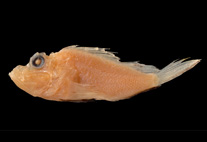Abstract
A taxonomic review of the scorpaenid genus Pteroidichthys Bleeker, 1856 resulted in recognizing four valid species, including two new species; P. acutus n. sp., P. amboinensis Bleeker 1856, P. caussei n. sp., and P. noronhai (Fowler 1938). The genus Pteropelor Fowler, 1938 is regarded as a junior synonym of Pteroidichthys. Rhinopias godfreyi Whitley 1954, previously treated as a valid species, is herein regarded as a junior synonym of P. amboinensis. Pteroidichthys amboinensis and P. caussei have two spines and six soft rays in the anal fin and a supplemental preopercular spine, whereas P. acutus and P. noronhai have three spines and five rays, and lack the spine. Pteroidichthys amboinensis differs from P. caussei in having flexible dorsal-fin spines (vs. rigid in the latter) and tentacles on the supraocular and posterior lacrimal spines well developed, their lengths greater than the orbit diameter (vs. less than orbit diameter). Pteroidichthys noronhai differs from P. acutus in having a relatively short snout, its length shorter than (vs. longer than in the latter) the postorbital length, and a distance between tips of the lateral lacrimal and first suborbital spines shorter than or subequal to (vs. longer than) that between tips of the first and second suborbital spines. Pteroidichthys acutus is known from the western Pacific in depths of 73–400 m, P. amboinensis from the Indo-West Pacific in 7–43 m, P. caussei from the South Pacific in 68–122 m, and P. noronhai from the western Pacific and Western Australia in 52–215 m.

